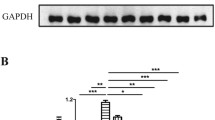ABSTRACT
Familial amyloidotic polyneuropathy (FAP) and senile systemic amyloidosis (SSA) are characterized by systemic extracellular deposition of insoluble transthyretin (TTR) fibrils. While only normal TTR is found in fibrils from SSA patients who predominantly suffer from cardiomyopathy, autosomal dominant FAP preferentially affects peripheral nerves and heart and is associated with so-called amyloidogenic mutations of this protein, giving rise to TTR forms of decreased stability. Using isoelectric focusing in urea gradients we were able to demonstrate a stabilizing effect of sulfite on TTR monomers and tetramers, as well as an increase in the tetramer/monomer ratio. We demonstrate that this ratio, which is decreased in FAP patients, can be increased to beyond normal levels. We show that doses of sulfite which are tolerable in vivo produce a significant increase in the tetramer/monomer ratio and postulate that sulfite may be a potent drug for delaying the onset and progress of FAP and SSA.
Similar content being viewed by others
Author information
Authors and Affiliations
Additional information
Received: July 20, 1999 / Accepted: July 26, 1999 · Published online: September 27, 1999
Rights and permissions
About this article
Cite this article
Altland, K., Winter, P. Potential treatment of transthyretin-type amyloidoses by sulfite. Neurogenetics 2, 183–188 (1999). https://doi.org/10.1007/s100480050081
Issue Date:
DOI: https://doi.org/10.1007/s100480050081




